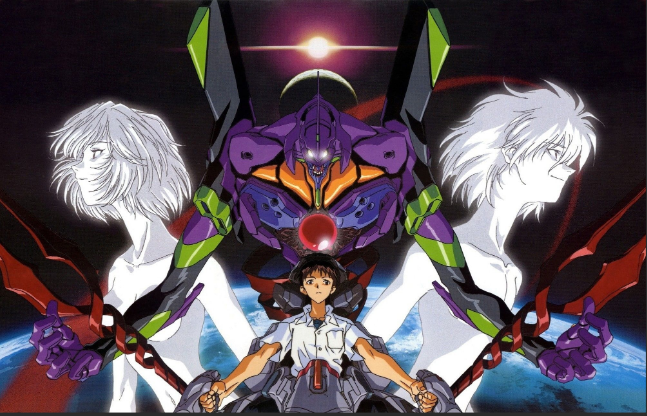
Lucky Paper Radio is an interesting podcast/website to put it mildly, starting in 2020 as a way for Andy Mangold and Anthony Mattox to talk about cube online, it has become in a way, the defining piece of cubing media for magic the gathering, the podcast and subsequent blog have a large following on the MTGCube subreddit, have integrated with Cube Cobra, the premier online cubing website, and have even interviewed figures such as the games founder, Richard Garfield, and have interacted with key Magic the Gathering personalities like . They aren't big, not even by Magic the Gathering Fandom levels, but they are notable, a distinct group of figures with a distinct voice.
I'm somewhat mixed on them myself, mostly because while I'm into cubing as a mtg subgenre, and they have done great work in advertizing things like non-Vintage Cube environments, but we sharply disagree on most points about things like cube design, to more complex stuff like the nature of art, so when I listen to podcasts I tend to move towards things like, Ian Flynn's Bumblekast or a audio only Nezumi VA video.
Still, if there is one part of the collective that I tend to repsect, it is Parker LaMascus's set reveiws. Parker LaMascus ever so often, maybe once or twice every month or so would go over a set and discuss both it's draft environment and what it means for your ideas when cube drafting. These set reveiws are consistently enjoyable and the part of the website I most go back to, and out of all of Lucky Paper Collective, when looking through the cube cobra pages, his cubes are often the most interesting and thought out.
I do want to remember, even if this article gets critical of LaMascus's work, I do respect him.
Still, rather recently, he put out an article entitled, Kamigawa and the New York Yankees, an article about the Kamigawa set and ideas surrounding the mixing of Japanese and American culture and the idea of cultural apporpiation.
Cultural appropriation is a tricky subject, it centrally, as I understand it at least, is about the idea of ownership of ideas, that certain peoples or groups have a ownership of certain ideas, practices or art forms, and outsiders, especially Westerners should not have access too, especially if it's done in a way that could be naive or harmful. This is a complex tricky subject, fundamentally a debate between the free flow of inspiration and ideas and the desire for cultures to remain thier own and not be overtaken by controlling outside influence, a debate with little clear answer and a thumb in many other sticky debates from international relationships to colonialism.
The article itself goes into this somewhat, if a bit shallowly, mostly talking about his love of the Kamigawa blocks weird floating monster designs and Japan's relationship with America, where after Japan lost WW2, America rebuilt it's government from the ground up, and the ways in which American Culture is seen in Japan.
When finally getting to the point where he talks about Kamigawa he brings up this point in specific, which is the point in which I want to talk to you today about: "Magic’s Kamigawa is, I think, a little more mixed. Champions of Kamigawa was described by its designers as “Shintō gone wrong,” a set based in ”Japanese mythology.” But Shintō is not myth. Shintō is a contemporary, ubiquitous, real-world religion of Japan, and the kami are its peaceful, natural, non-anthropocentric objects of veneration.3 It’s like making a set about Henry VIII rejecting Catholicism, printing a hundred-odd cards with blood-frocked priests and vengeful nuns, and slapping on a cruciform set symbol just in case someone didn’t get the joke."
Which like, have, has Parker LaMascus seen a singular piece of Japanese Art. Like, one of them. Japanese art uses Christianity in you couldn't even dream of. Let's go over a small list of examples.

1: Neon Genesis Evangelion. Worldwide smash. Had a series of blockbuster movies made a reboot for it. The main badguy alien invaders were named after biblical aliens, and one of them is gay.
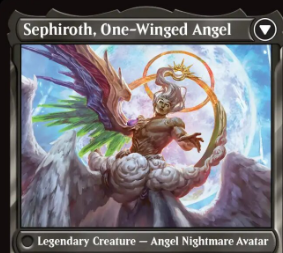
2: Final Finatasy 7. One of the most influential games of all time. 2nd best selling game on the PS1. Had a large portion of a magic the gathering set cenetered around it. Final Boss is a self proclaimed god named "Sephiroth" whose theme is called One-Winged Angel.
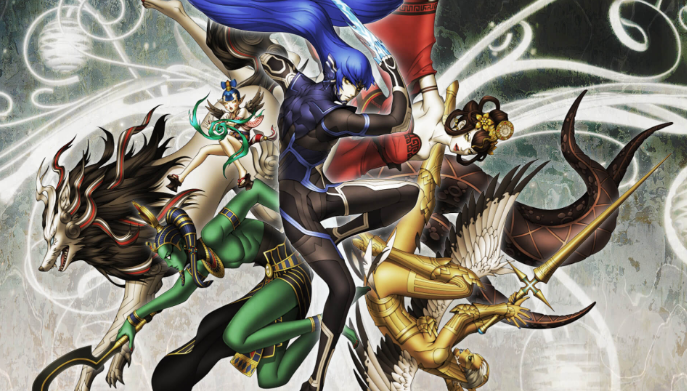
3: Shin Megami Tensei. A video game series where the fundamental premise is that the world has ended, and now you have to make contracts with demons, depicted as a mix of random folklore from across the world including Japan, and have to decide whether to work with the Lawful Nutcase faction of the Angels, the survival of the fittest demons, or carve your own path forward. The final boss of the second game is literally, not jokingly the Christian God. Counting Spinoffs there are over 96 of these games, selling collectively over 19 million units. One of the latest games in the franchise Persona 5 features the protagonist wielding Satanael against the evil Yaldabaoth.

4: A Certain Magical Index. Sexy anime nuns.
I could go on for about basically forever, killing god is a goddanm cliche in JRPGS, like there ia a lot of japanese media that is deeply critical of organized religion. Magic just had that Final Fantasy Set, one of the games in that in Final Fantasy 10, which is basically just one big elaborate critique of organized religion. And it's not like religious critique is just a japanese thing, the english speaking world has a bunch, Garth Ennis comics sell and he's like cartoonishly anti-religion.
And like with the whole thing with the set of blood frolicked priests, you know your playing magic the gathering, right, the game that was a major target of the satanic panic. The game where you can summon a demon, give your creatures "Unholy Strength", take a "Contract from Below". That magic the gathering set with all the blood-frocked priests basically already exists, it's called The Dark, and it is
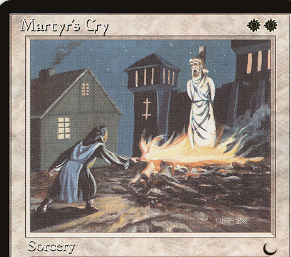
much
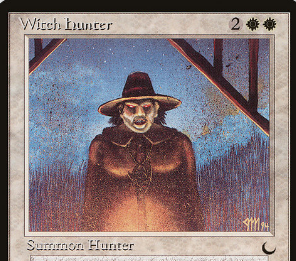
much
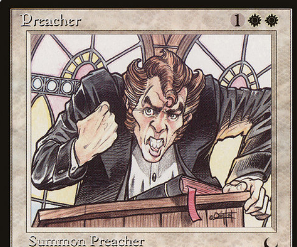
much more cynical about Christianity than Kamigawa is about Shinto. At least for most of Kamigawa, the spirits where fighting for a good reason.
Like, at some point later he brings up the whole idea of Shinto Spirits being non-aggressive and Shinto being a "peaceful religion" which kinda feels, really orientalist honestly. Like holding Japan up higher just because it isn't the west. Like in Yugioh, the game you acknowledge is bigger than Magic in Japan you can play literal actual Amaterasu herself on a card, the head goddess of Shintoism said the be the ancestor of the Japanese Emperor. She has 3000 Attack Points. 3 hits from her and your opponent loses.
I mean, I don't actually intend to rag on Parker that much, out of all the Lucky Paper people I still respect his work the most, I particularly appreciate his dedication to the surveys, and he himself seemed to not be one hundred percent sure of these ideas surrounding cultural appropriation and Japan and America.
It's just, sometimes you see something so wrong, you kind of have to right a response to it, for the wrong person's sake more than anything, so that they, or someone making similar mistakes can see this and go, "Ah, I was wrong." Parker says it himself in the article "Ignorance is nothing to be ashamed of, it is something to grow past.", and maybe this will help some people grow past there ignorance.
It's just ultimately, culture should be shared between groups, between people, without inspiration from Japan, Van Gogh would never have made Falling Leaves, and without Western Animation, Tezuka would have never made Astro Boy. Basically every piece of media I've talked about here today takes inspiration from both Western and Eastern works of art, and most of them are anywhere between quite good and the best in thier genre. So take shit from other cultures, they'll take stuff back and use that to create something wonderful, because when people inspire each other, that's how art truly grows.